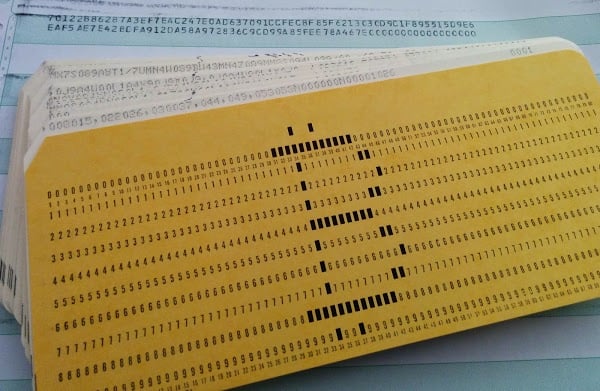Bitcoin mining has grown into a vast economy over the past few years as large ASIC-powered mining farms process transactions for the $32 billion dollar market. In the early days, people could mine bitcoins using their central processing units (CPU) and they still can, but the undertaking is extremely inefficient. However, a few people still mess around mining bitcoins using older computers and retro devices merely for the fun of it and for experimentation purposes.
Bitcoin Mining With Classic Computers and Retro Gaming Consoles

The bitcoin mining ecosystem is a competitive environment of pools processing transactions while simultaneously securing the network. Miners run special software and use application-specific integrated circuitry (ASIC) to mine bitcoins these days, using chips far more efficient than your standard CPU. Currently, older computers can mine bitcoins at a prolonged rate, but it’s still pretty cool to see if a classic system can perform the task of bitcoin mining.
One bitcoin enthusiast has done just that a few times with older computers. Ken Shirriff is well-known in the bitcoin community for his work on getting the bitcoin symbol added to Unicode. Shirriff also has a popular blog where writes about his projects and how he has mined bitcoins using classic devices from the past. Just recently Shirriff has been working on a Xerox Alto restoration and managed to get the seventies built computer to mine bitcoins at 1.5 hashes/second. The Xerox Alto is a well-known computer classic that was the first device to support a graphical user interface (GUI) in 1973.
“I’ve been restoring a Xerox Alto minicomputer from the 1970s and figured it would be interesting to see if it could mine bitcoins,” explains Shirriff,”I coded up the necessary hash algorithm in BCPL (the old programming language used by the Alto) and found that although the mining algorithm ran, the Alto was so slow that it would take many times the lifetime of the universe to successfully mine bitcoins.”
The computer’s 1.5 blocks per second is significantly slower than the chips used today. Shirriff details the Xerox Alto’s speed would take “5000 times the age of the universe” to mine one block. For demonstration purposes, Shirriff used the input of a successfully mined block to see if the algorithm succeeded. Shirriff’s code is available on Github for those who would like to try out Xerox Alto mining.
An Old IBM Mainframe From the Sixties Would Take Roughly 40,000 Times the Current Age of the Universe to Find a Block
Another project Shirriff worked on back in 2015 was mining with a 55-year-old IBM 1401 mainframe at 80 seconds per hash. This computer was the best-selling computer of the mid-1960s and mainly used for business purposes.
“While modern hardware can compute billions of hashes per second, the 1401 takes 80 seconds to compute a single hash,” details Shirriff. “This illustrates the improvement of computer performance in the past decades, most famously described by Moore’s Law — To summarize, to mine a block at current difficulty, the IBM 1401 would take about 5×10^14 years (about 40,000 times the current age of the universe).”

Mining Bitcoin With a 1985 Nintendo Entertainment System
 Retro Miner created a bitcoin miner with a 1985 NES and a Raspberry Pi.
Retro Miner created a bitcoin miner with a 1985 NES and a Raspberry Pi.
Lastly, another neat project is another incredibly slow miner built in 2013 out of a 1985 Nintendo Entertainment System (NES). The creator of the NES mining system was joking around with his friend about mining bitcoins with an 8-bit game console. Well, he took that as a challenge and built a Nintendo that communicated with the network and performed SHA256 hashing. For other portions of the project, he did need a Raspberry Pi for computing that did not take place on the NES.
“SHA256 hashing uses many 32-bit operations, and the 6502 in the NES is an 8-bit CPU,” explains the retro miner creator. “Initially I thought this would be a significant challenge, but with some modifications, I got an open implementation of SHA256 to compile to a 6502 target using the cc65 compiler.”
“The Raspberry Pi gets a chunk of data, compiles it into a ROM that includes the SHA256 algo and current target data, and sends it to the console via USB CopyNES. Each ROM computes and tests a single hash.”
In the end, the NES miner worked and started searching for blocks with Slush’s pool, but the creator said there was plenty of room for build improvements. “What I’m doing now is very slow, and I admit, pretty lame,” explains the retro miner’s blog post. Additionally, bitcoiners have had great discussions concerning mining bitcoin with other gaming consoles like the Playstation 3.
ASIC Producers Don’t Need to Worry About Retro Miners
Obviously, these types of projects won’t be mass adopted to mine excessive amounts of bitcoins like ASICs because it would take many lifetimes to find one block using a retro device. However even though watching an older computer or gaming console mine bitcoins is super slow it’s very interesting to see that these devices are compatible with the Bitcoin network.
Source: https://news.bitcoin.com/mining-bitcoin-old-computers-retro-gaming-consoles/







